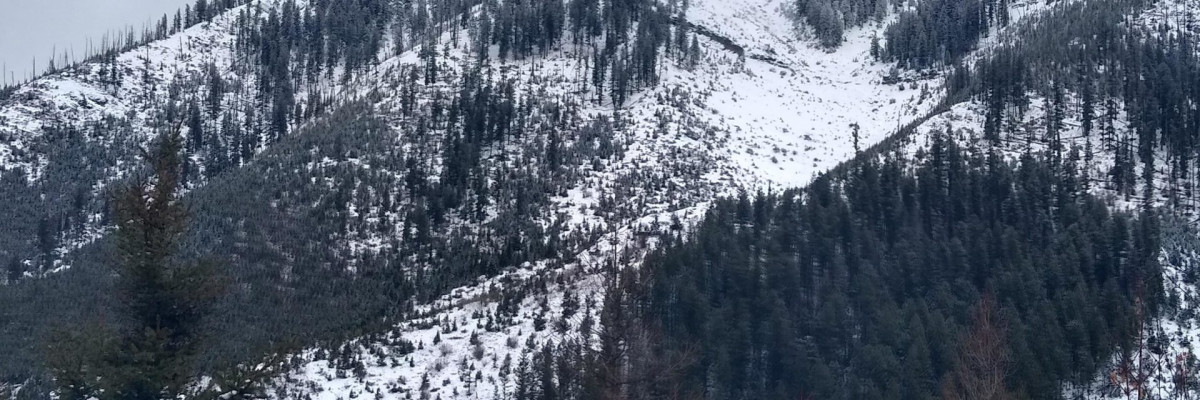This is Jeff Carty one of your new forecasters with a snowpack update for December 10, 2019.
The storm we were hoping for failed to produce the significant amounts of snow forecast on Friday. Snow did fall though, up to 12” in the Swan with amounts decreasing as you move south through the advisory area. The southern Bitterroots received the least amount of snow with a few inches. The freezing level was around 6000’ during the storm. Low elevations <6500′ continue to have coverage too thin to ski without hitting trees, rocks, stumps, and ground, areas above 6500 require careful skiing due to hazards just below the surface.
Light snow is expected daily in the Swan for the next few days, with potential for snow throughout the forecast area late Wednesday. Winds gusting to 37mph are forecast out of the southwest.
While the existing snowpack was not loaded enough to tip the balance into an avalanche cycle, it did gain weight and depth. Very poor snowpack structure, continuing winds and new snow available for transport mean that the likelihood for avalanches continues to increase.
Persistent weak layers continue to be the primary concern. Throughout our forecast area, the snowpack consists primarily of facets and crusts. Surface hoar formed in the southern Bitterroot; there is depth hoar in the Rattlesnake, and facets everywhere. The slab above the bed surface has been slowly growing and consolidating. Stability tests are showing a propensity for propagation with medium strength down to 16” thick. While these areas are still isolated, a consolidated slab of this thickness poses a serious hazard if an avalanche were triggered.
Wind will continue to load lee slopes throughout the week and further stress the underlying snowpack. The new snow that has fallen is light density and easily transported, increasing the likelihood of wind slabs.
Watch for and pay attention to red flags like recent avalanches, collapsing (aka “whumping”), shooting cracks, and rapid wind loading.
Terrain management is key for safe backcountry travel. Avoid convexities, terrain traps, and overhead hazards. As slabs stiffen, they may pull back onto lower angle terrain if triggered. Be conservative.
Please share your observations with us. Any information you can provide helps us forecast better.
Ski and ride safe!
























